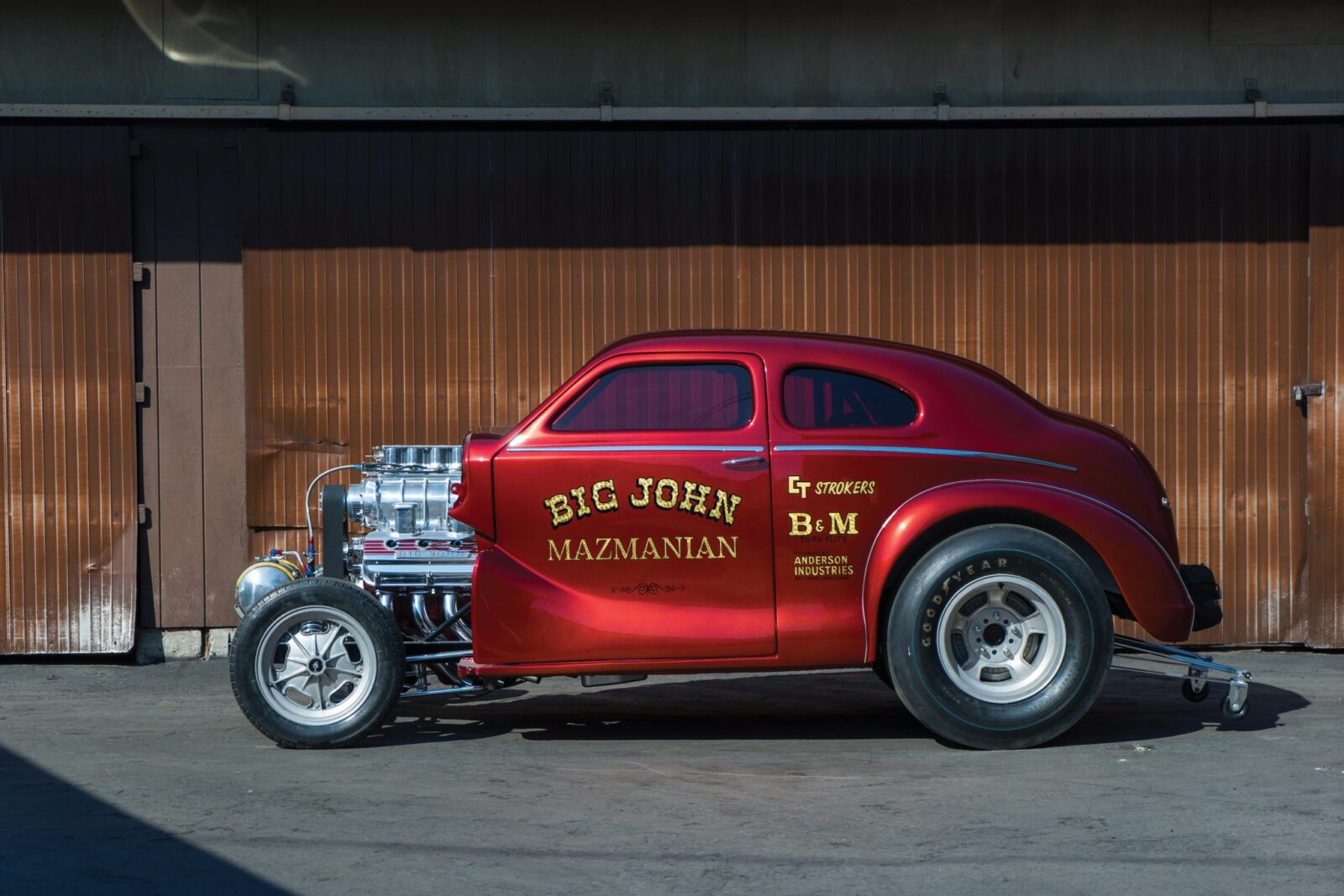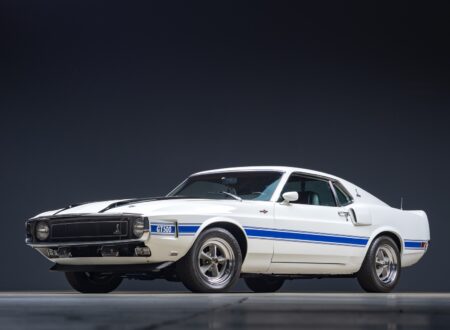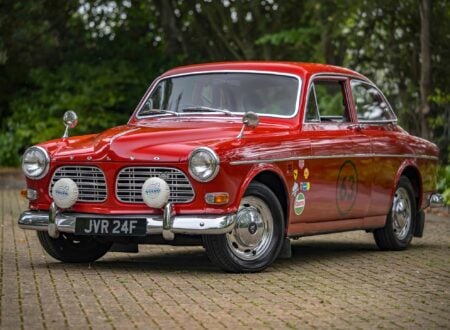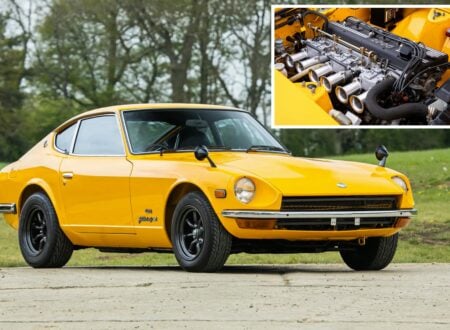Standing at 6′ 5″, “Big John” Mazmanian was a larger than life character in the world of American drag racing known for his speed and his now legendary red Austin. He started out as many did, racing a ’30s era Ford he’d bought while still in high school and made it go as quick as possible with the help of his shop teacher, who’s encouragement would help Mazmanian go on to become one of the most recognisable names in the drag racing scene of the ‘50s and ‘60s.
A BRIEF HISTORY OF THE GASSER
For the uninitiated, a Gasser is style of American drag racing car designed to run on regular pump gasoline, rather than race fuel or ethanol.
They run on gas, so they called them gassers. Despite the sensible name, there’s nothing at all sensible about the cars themselves. In fact they almost seem designed to look like a Hot Wheels caricature of an American drag racer. Which might be why they’re so widely loved.
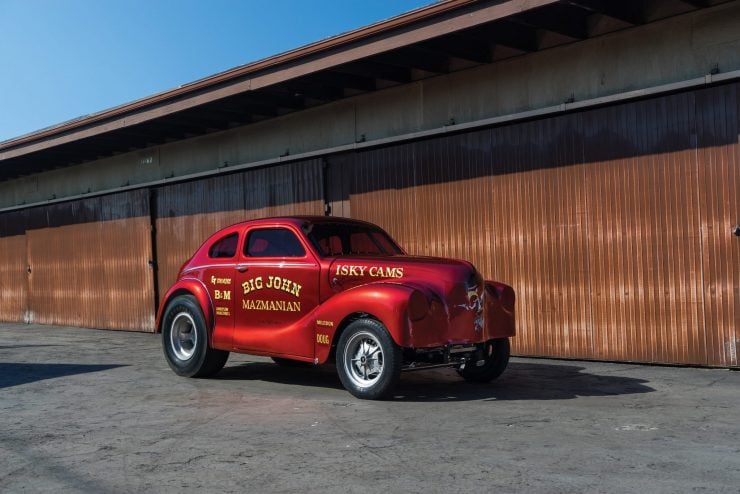
Historians of American drag racing will tell you that gassers first appeared in the 1950s, and lived a white hot life right up until the late 1960s. The NHRA would close the class in 1972 but it refused to die, and today over 40 years later you can still buy, build, and race gassers against other competitors in their iconic high-riding drag racers.
The structure of a Gasser is relatively simple. You take a body shell from a vehicle built in the 1930s, ’40s, or ’50s and strip the weight out of it, add the biggest V8 you can (often with a supercharger but not always), you bolt in a straight front axle, cut holes under the fenders and squeeze the headers through, add a set of fat slicks to the back, jack up the suspension, add some ladder bars and possibly some wheelie bars out the back.
The golden age of the Gasser took place in the ’50s and ’60s, the “Gasser Wars” were in full swing and local drag strips across the country would feature brightly colored jacked up V8s thundering down the 1/4 mile leaving a wake of molten rubber, smoke, and noise.
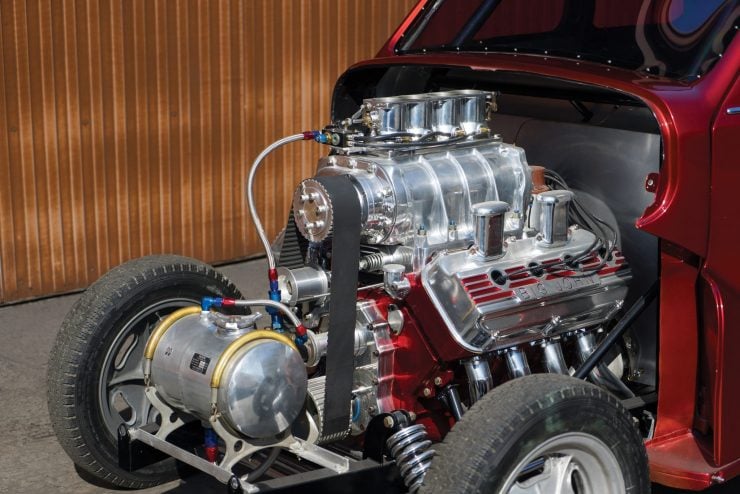
The Gassers were always a crowd favorite, and their unique stance was emulated widely within muscle car culture at the time. The reason the cars sit the way they do is to aid in weight transfer from front to back – to load up the rear suspension and tire, using it almost as a spring to help push the car down the strip.
Gassers are still being built brand new today, you can buy reproduction bodies as well as engines and drivetrain components. Depending on which state you’re in you can even build a Gasser to road legal specifications, allowing you to drive it to the strip, race it all day, and then drive it home at the end of the day. If you don’t hit the wall that is.
The Austin Gasser “Football” Shown Here
Though he raced in a number of classes, Big John is probably best remembered for his time in the Gasser world. In 1964 he bought a 1941 Willys coupe and dropped a 392 cubic inch Chrysler Hemi in it, as the ‘60s progressed he wanted to go faster, so he bought a lighter-weight Austin and swapped out the original steel doors, front end, and desk lid with fibreglass.
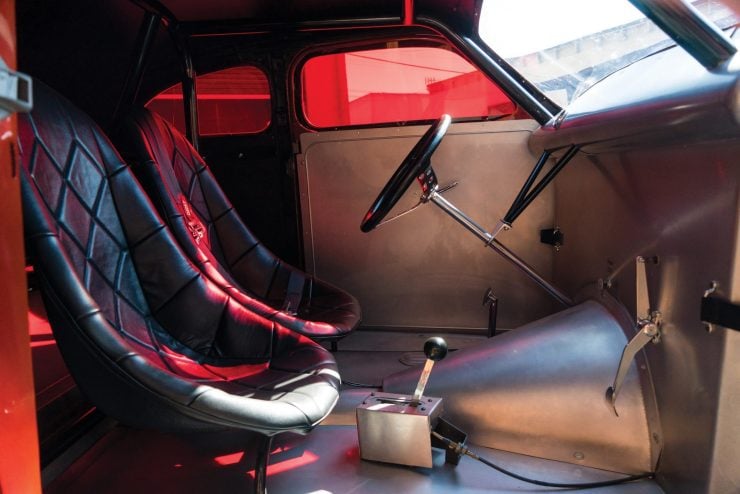
Due to the color and shape of the chopped Austin, it became known as “The Football”, and is now remembered as one of the most iconic vehicles from the golden age of gassers.
At some point in the late 1960’s Big John removed the Austin body and modified the frame to accept an Opel GT body. Fortunately the distinctive original Austin body was kept in one piece, and Jeff Kirkpatrick built a bespoke new (period correct) chassis while Mike Guffy sourced the correct period parts to complete the project, and painter Fritz Schenck returned the Football to its unique candy red finish and applied the original Big John livery.
The legendary football is now being offered in almost as-new condition by RM Sotheby’s at the Hershey Sale due to be held between the 5th and 6th of October this year with no reserve. If you’d like to read more about the car or register to bid you can click here to visit the listing.
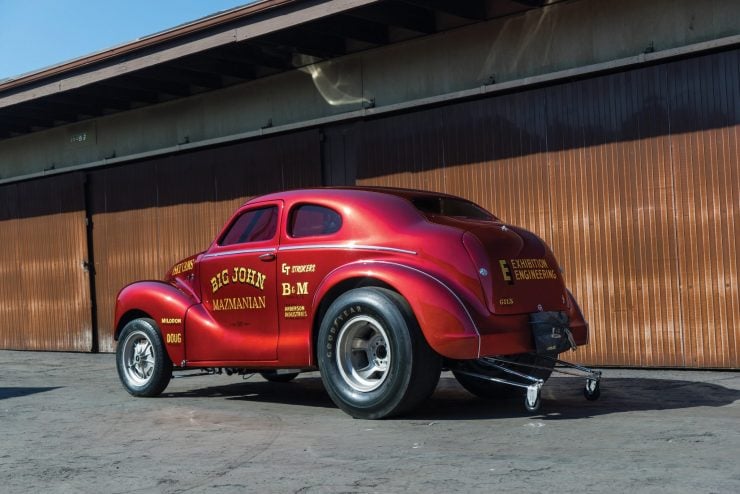
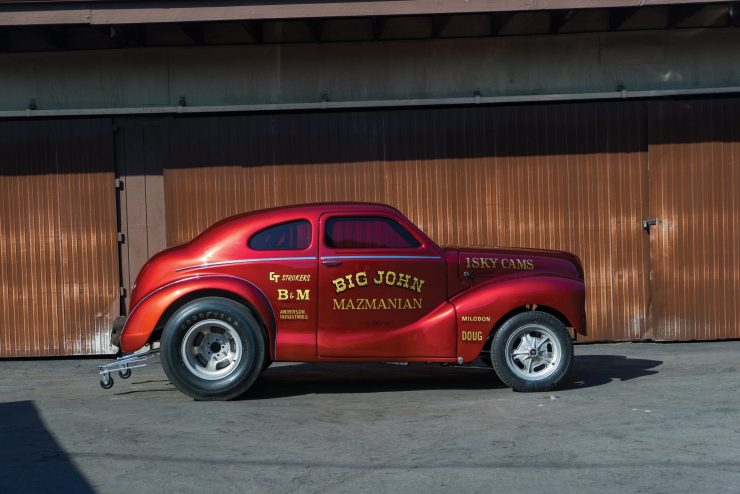
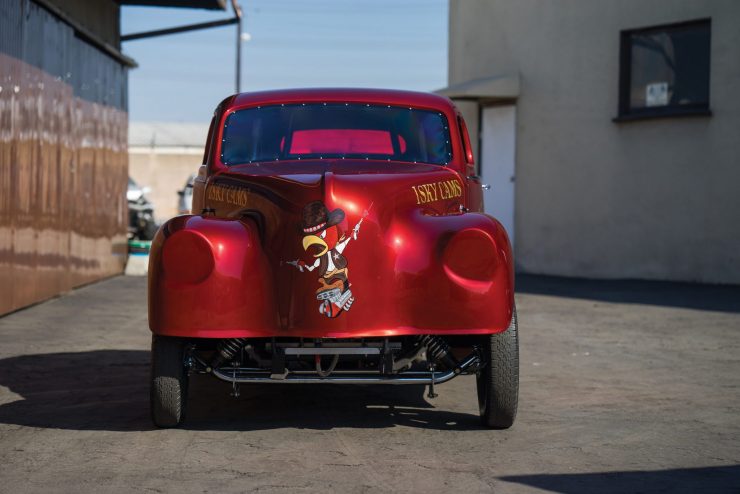
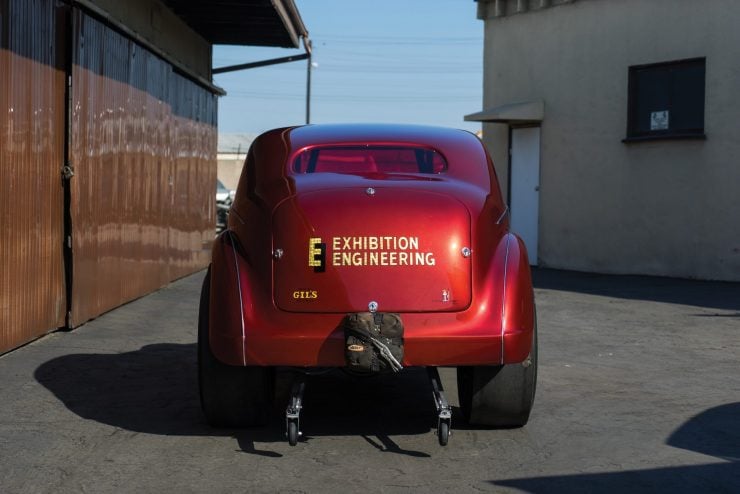
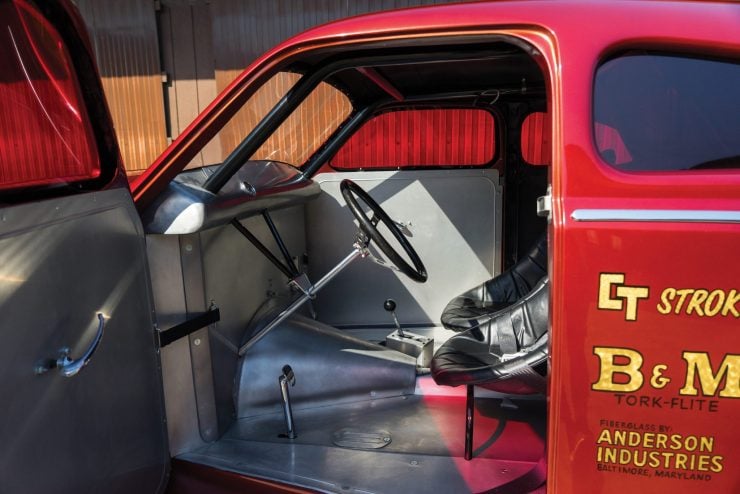
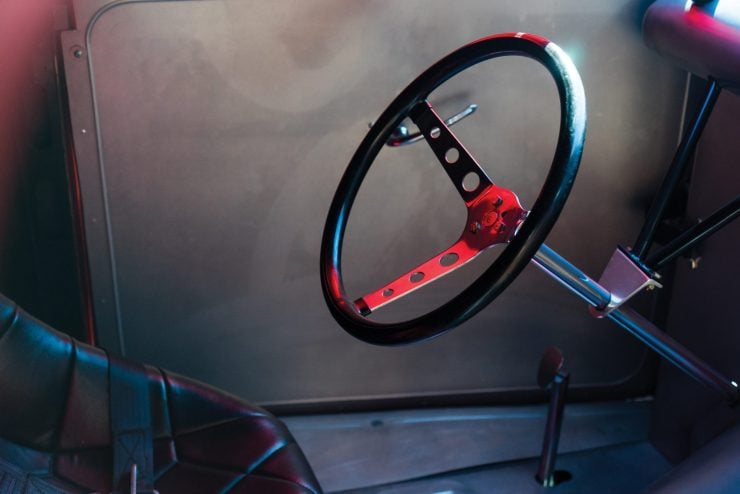
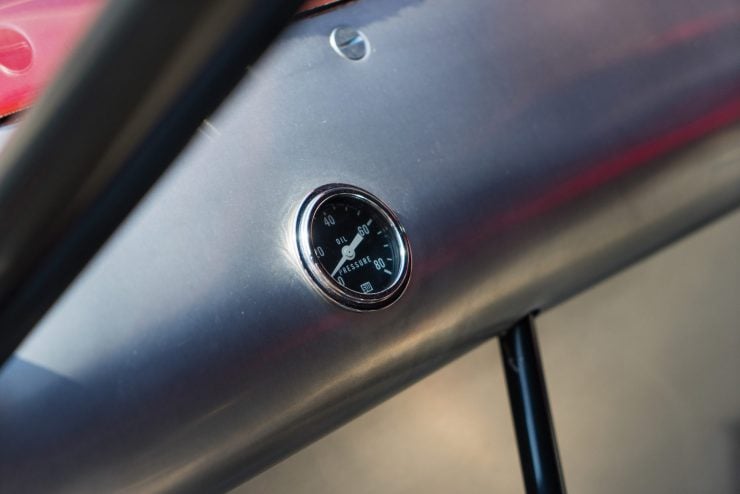
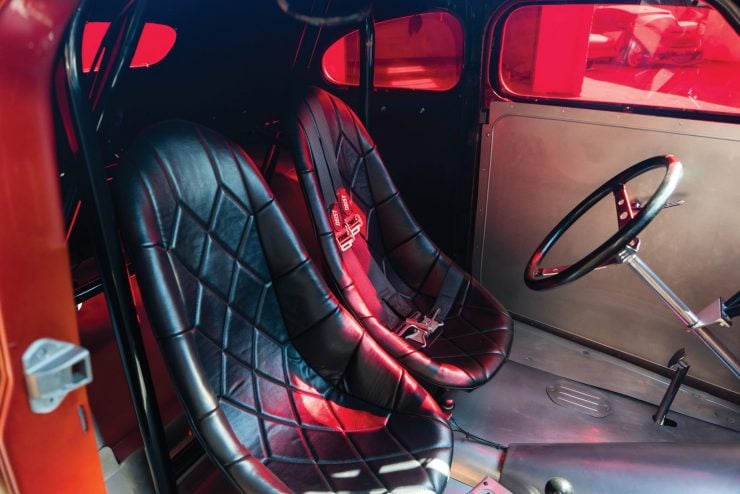
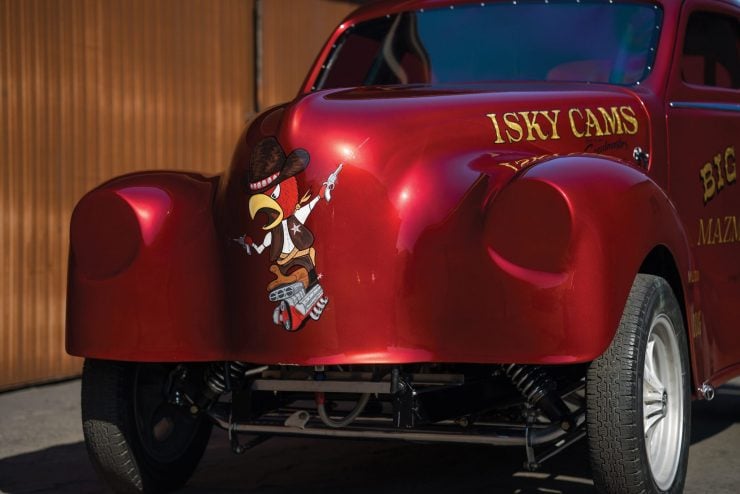
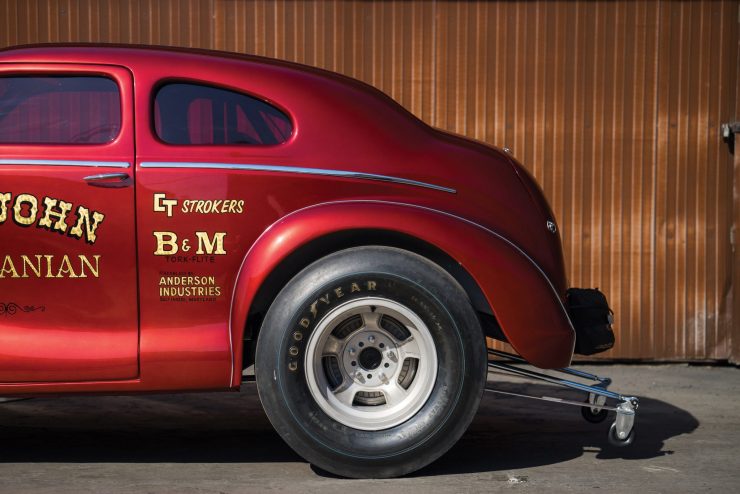
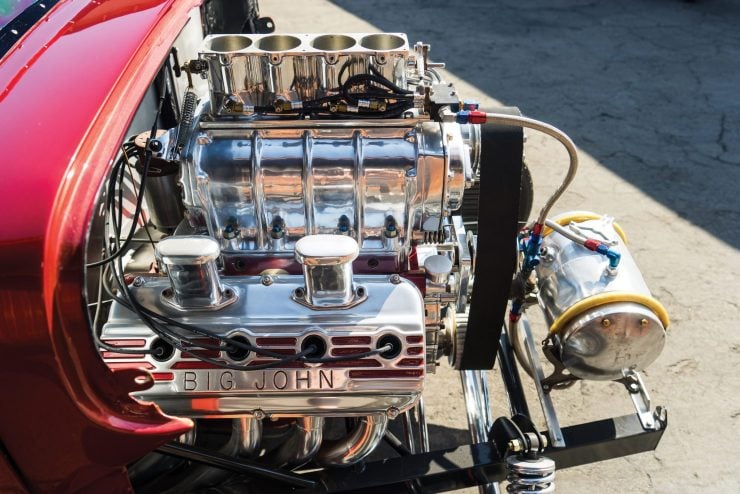
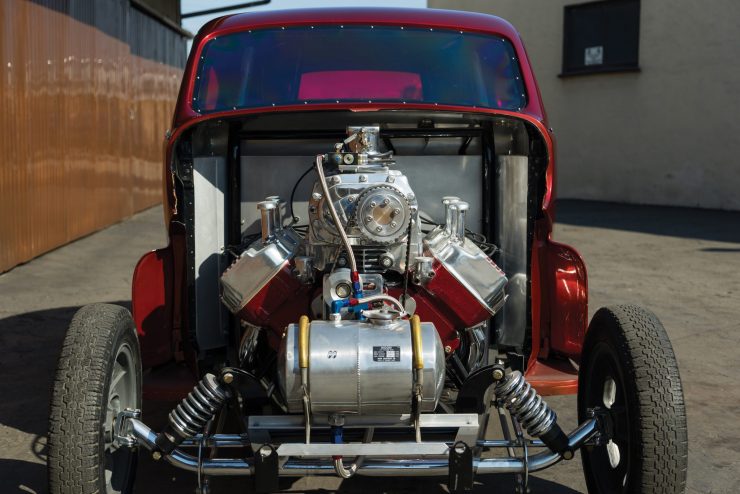
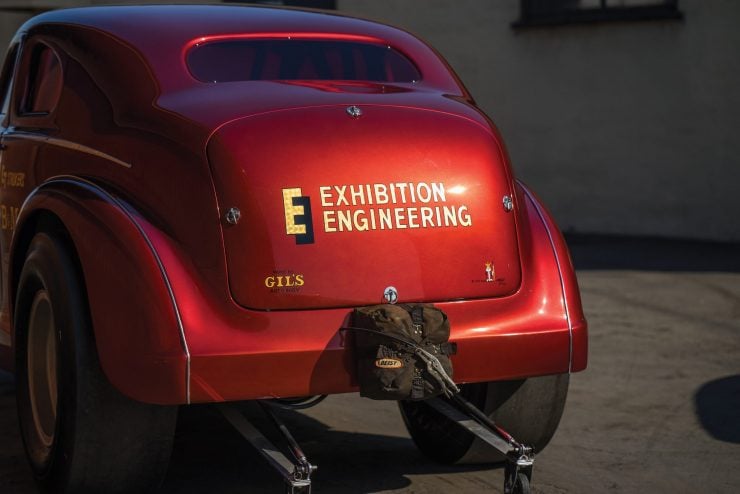
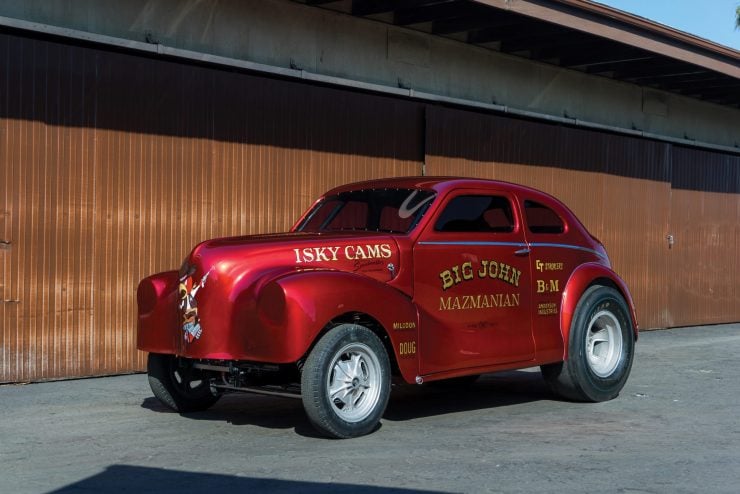
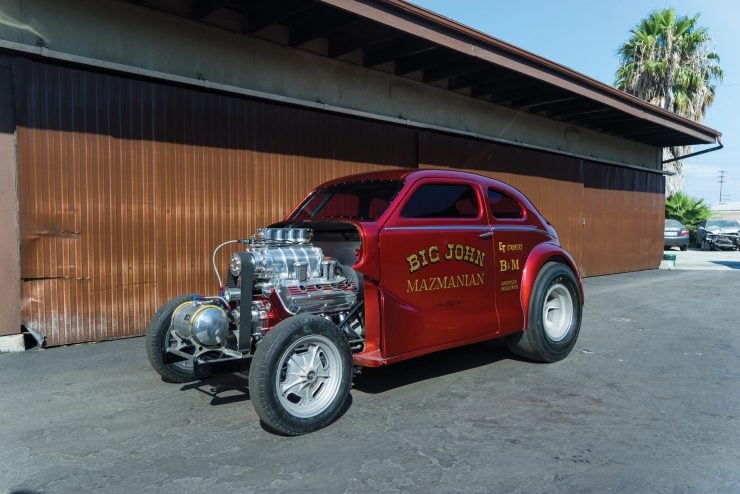
Photo Credits: Karissa Hosek ©2017 Courtesy of RM Sotheby’s

